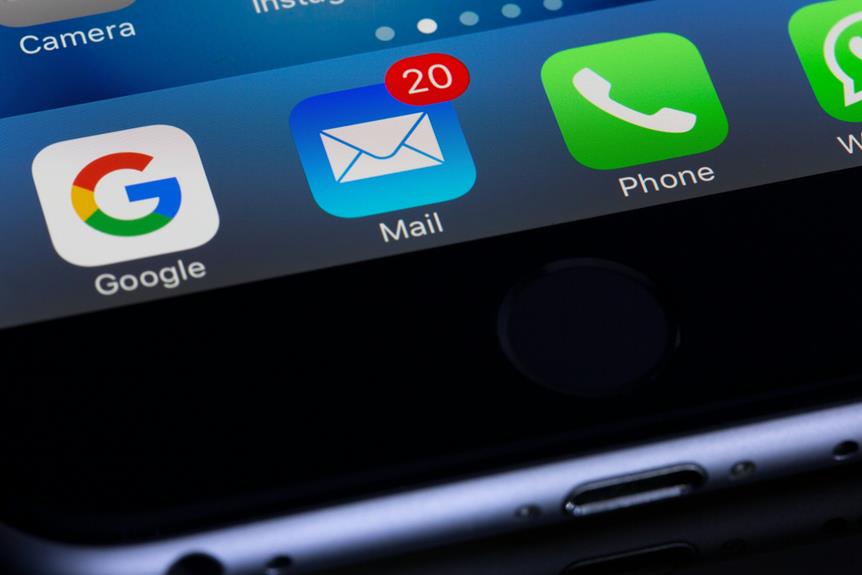Curious about how many follow-up emails to send to boost your chances of getting a reply? Wondering if there’s a magic number or a set rule to abide by?
Today, we’re going to dive deep into the world of efficient cold email follow-ups, offering you strategies backed by solid data to help improve your response rates.
But, we’re not stopping there. We’ll also guide you on how to craft captivating follow-up emails, ensuring each of your messages grabs your reader’s interest and nudges them to take action.
So, if you’re all set to learn the secrets behind successful cold email follow-ups, continue reading and learn how to take your email marketing game to the next level.
Key Takeaways
Ever pondered how many reminder emails you should drop in to increase your chance of getting an answer? Is there a secret number or a set guideline to follow?
Well, we’re about to delve into the fascinating world of effective reminder emails sent after a cold email. We’re talking about strategies grounded in real data that can boost your reply rates.
But that’s not all. We’re also going to give you a hand in creating compelling reminder emails. We want to make sure that every message you send out sparks your reader’s curiosity and prompts them to act.
So, are you ready to uncover the tricks of the trade for successful cold email reminders? Keep reading and find out how you can ramp up your email marketing skills.
Optimal Number of Follow-Up Emails
So, you’re wondering how many follow-up emails you should send, right? Well, it’s not as straightforward as it might seem, because it relies on a few things. The type of business you’re in, who you’re trying to reach, and how they’ve responded in the past all play a role. But from looking at the data, it seems like sending between 4-9 follow-up emails can do the trick for cold sales outreach.
Now, don’t get too carried away with that number. Each time you send a follow-up, it’s a little less likely to get a response than the last one. But don’t lose hope. Did you know that more than half of the responses come between the fourth and eighth follow-up? That’s right! Your first email is likely to get the most replies, and then it gradually decreases.
But hey, there are some tricks to make your follow-ups more successful. Make your emails feel personal. That could mean tweaking the subject line or the content to resonate with the recipient. Make your messages catchy and relevant to what the recipient needs. Don’t forget to include your call to action in each email. It’s a gentle reminder of what you want them to do.
Timing Between Follow-Up Emails
So, you’re wondering how to space out your follow-up emails? It’s a good question. The timing of these emails is key to keeping the conversation going without overwhelming the person on the other end. You definitely don’t want to come off as pushy or irritating. It’s all about striking that perfect balance – being persistent but not crossing into stalker territory.
Here’s a tip: think about the nature of your prospect’s work and their industry. That could give you some insight into when might be the best time to send a follow-up. Unfortunately, there’s no one-size-fits-all rule for this. But, don’t worry, there are some general guidelines you can follow to help determine the right intervals between your emails.
Tips for Writing Effective Follow-Up Emails
Want to make your follow-up emails more effective? Here’s the scoop on how to do it.
Grab your recipient’s interest straight away with a catchy subject line. Use their name and company in your email for a personal touch.
But remember, it’s not just about getting their attention; you also need to provide clear value. By adding these elements, your emails are more likely to be opened and you’ll reap the benefit of improved responses.
Write as if you’re having a chat with a friend, and you’ll find your emails feel more natural and engaging.
Subject Line Tips
Let’s chat about the art of writing a great subject line for your follow-up emails. It’s pretty much the key to getting your email opened and read. You need to make it really stand out and show the receiver why it’s worth their time to read what you have to say. Think about it this way – your subject line is basically your first impression, so it should be a good one, right?
The trick is to keep it simple yet intriguing. You should focus on what the reader needs and how your email can help them. Using their name in the subject line is a nice touch – it feels more personal that way.
You can also create a bit of urgency, but be careful not to overdo it. You don’t want to come across as spam or clickbait. Just a gentle nudge to prompt them to act quickly.
And remember, there’s no one-size-fits-all solution. Try out different subject lines to see what resonates with your audience. So, go ahead and play around with it until you find what works best.
Good luck!
Personalization Techniques
Personalizing your follow-up emails can really make a difference. Start by using their name and mentioning their company, it’s a surefire way to create an instant bond.
The importance of personalization in your cold email follow-ups can’t be underestimated. Check out these four handy tips for your next follow-up email:
- Make it relevant: Tailor your email to suit the person you’re sending it to. Consider their role, sector, or any particular needs they may have. It’s a great way to show that you’ve done your homework and that you genuinely care about their success.
- Be helpful: Share some extra information or insights that are related to their industry or the obstacles they’re facing. It’s a great way to show off your knowledge and position yourself as a useful contact.
- Name-drop mutual acquaintances: If you both know the same people, don’t be shy about mentioning it. It can help you build trust and credibility.
- Personalize templates: Create email templates with a personal touch. Maybe recall a past conversation, mention a specific event or tailor your offer to their situation. It’s a great way to show you’ve put thought into understanding their circumstances and crafting your message accordingly.
Benefits of Using a Multichannel Prospecting Strategy
Do you want to give your cold email campaigns a massive boost? Well, a multichannel prospecting strategy could be the secret sauce you’ve been missing. It’s like adding a pinch of salt to your favorite dish, it just makes everything better.
Imagine this: you’re not just sending emails anymore, you’re also connecting with your prospects on social media, chatting with them over the phone, and even sending them good old-fashioned direct mail. Now, that’s a recipe for success, isn’t it?
But wait, it gets even better. When you use different channels, you can adapt your messages to fit each one. So, you’re not just blasting out generic messages, you’re creating personalized connections. It’s like being able to talk to your prospects in their own language.
And guess what? This strategy increases your chances of getting a reply. You’re reaching out in different ways, so the odds of getting a response are much higher.
But let’s not forget about the power of analysis. By keeping track of how each channel is performing, you can tweak your strategy to focus on what’s working best. It’s like having a personal trainer for your sales strategy, helping you become stronger and more effective.
If you’re worried about cold emailing becoming less effective, don’t sweat it. With a multichannel approach, you’re adding value for your prospects and making it more likely they’ll respond positively.
And for those who like to work smarter, not harder, sales automation tools like lemlist can help streamline your follow-up process. You’ll save time and energy while still delivering personalized messages. It’s like having your cake and eating it too!
What is the best way to write a follow-up email for a cold email campaign, based on the data?
When crafting b2b cold email subject lines, it’s vital to personalize the follow-up message based on recipient engagement data. Use a compelling and succinct subject line, reference the previous email, and offer unique value to spark interest. By analyzing the data, you can tailor your follow-up emails for maximum impact.
Automation Tools for Follow-Up Emails
Let’s chat about how automation tools can make a world of difference for your follow-up emails. Not only do these tools save you a bunch of time, but they also help you craft personalized emails for your prospects. Here’s why they’re a game-changer:
- Keeping Things in Order: Tools like GMass or Woodpecker are great for keeping your emails on track. You can plan and schedule your follow-up emails without breaking a sweat, ensuring they’re sent out right on time.
- Creating Personal Touches: Forget about spending hours crafting the perfect email. With AI email writers, you can whip up personalized content based on real data and insights. It’s like having your very own personal assistant to make your emails more impactful.
- Keeping Track of Everything: CRM systems like Close CRM make it easy to automate and manage your follow-up emails. Not only can you set up reminders, but you can also keep tabs on all your emails in one place.
- Knowing What Works: One of the biggest benefits of automation tools is the ability to track and analyze how well your follow-up emails are doing. You get to see what’s working and what’s not, giving you the chance to fine-tune your strategies for better outcomes.
Best Practices for Cold Email Follow-Ups
If you’re sending out cold emails and trying to follow up, I’ve got some tips for you.
Let’s chat about timing and frequency. It’s important not to crowd your potential customer’s inbox with back-to-back emails. So, keep some good intervals between your follow-ups.
Now, let’s move onto personalization. Each email should feel like it’s been handcrafted for the receiver, addressing their specific needs. And don’t forget to bring something new to the table with every message. This way, you’re not just pushing for a reply, but also providing value.
Trust me, follow these tips and you’ll see better engagement and possibly, even some new customers.
Timing and Frequency
When it comes to nailing those cold email follow-ups, timing and frequency are key. Let’s break it down in a simpler, more conversational manner.
- Don’t procrastinate: After you’ve sent the first email, give it 2 days before you hit them with a follow-up. Then gradually increase the waiting period. Wait 4 days each before sending the third and fourth emails. After the fourth email, give a 5-day break before the next follow-up.
- Timing is everything: A lot depends on factors like the industry you’re targeting and the time zone of your recipient. You’ll find that Monday mornings often get the best responses. But keep an eye on your response rates to identify the most productive day for your specific case.
- Keep it engaging: Every follow-up email should add some value to the conversation. Offer new insights or information but avoid using any language that might come off as guilt-tripping. Keep it to the point, say about 120 words, while providing enough detail.
- Don’t sit on your hands: You have to give your prospects some time to reply. But don’t wait indefinitely. If you’ve not heard back after a reasonable period, it’s fine to send another email. Ask for an update in a polite manner and reassure them that you’re still interested in hearing back from them.
Personalization and Value
Making your follow-up emails a bit more personal and offering something of value can really help get your cold outreach emails noticed. Think about it, wouldn’t you be more likely to take notice if an email was clearly written with your own needs and hurdles in mind? By showing that you understand what they’re going through and offering solutions tailored to them, you’ll stand out from all the other emails in their inbox.
There’s no magic formula that works for everyone, so you’ll need to adapt your approach.
Say, for instance, your offer isn’t what they’re looking for. Why not suggest other options or resources that could be useful to them? Or if they haven’t responded to your first email, a friendly nudge with a clear next step might be all they need.
Frequently Asked Questions
Is It Okay to Send Multiple Follow up Emails?
Absolutely, sending multiple follow-up emails can be a good move. It all comes down to how you time them, how often you send them, how you personalize them, and the kind of subject lines you use. Creating engaging content and using calls to action in the right way can also boost your response rates and help you build strong relationships. And don’t forget, it’s always a smart idea to use examples of past successes and to try out different versions of your follow-up emails to see which ones work best. It’s also crucial to set achievable goals – remember, patience is key!
How Many Times Should You Send a Follow up Email?
So, you’re wondering about the right number of follow-up emails to send, right? Well, it’s all about finding the sweet spot that works best for your situation. It’s crucial to be persistent, but don’t forget to maintain a respectful approach.
Let’s break this down a bit further, shall we?
First off, you need to tailor your method according to your specific situation. It’s like a suit – not one size fits all.
Next, think about when you’re sending your emails. Timing is everything, after all. You don’t want your message to get lost in the daily flood of emails, do you?
Now, onto the content of your email. Personalization is key here. Make your recipient feel valued and they’re more likely to engage with your message.
Remember, not every approach will work for every person. That’s why it’s good to try different things – sort of like an A/B test. See what gets the better response and tweak your tactics accordingly.
Keep tabs on your responses. It’s the best way to gauge whether your follow-up emails are hitting the mark or not.
Lastly, never forget to stay professional. Even if you’re not getting the response you want, always maintain a level of professionalism.
How Many Sales Follow up Emails Should You Send?
How many follow-up emails should you be sending for successful sales? Well, most experts suggest that a range of 4 to 9 is just about right. But it’s not just about the quantity, oh no, it’s also about the timing and making each email feel personal to the recipient – that’s how you really boost those conversion and response rates.
Ever thought about testing different approaches to see what works best? A/B testing can be a great way to figure that out. And while you’re at it, why not try out different follow-up templates? That’s another great way to work out the best frequency for your emails and how to ace those subject lines.
How Many Cold Emails to Send Before Giving Up?
If you’re wondering how many cold emails you should send before throwing in the towel, here’s a friendly suggestion – don’t stop at one! A single email might not do the trick, so go ahead and send a few more. But remember, the key isn’t just to flood someone’s inbox. It’s also about being clever with your timing, crafting personalized messages, and playing around with your subject lines and frequency of follow-ups. Keep an eye on your outcomes, see what works and what doesn’t, and adjust your tactics accordingly. That’s how you’ll get the best results.



